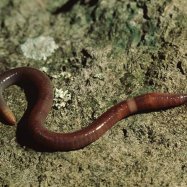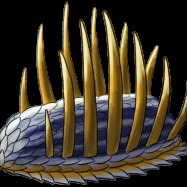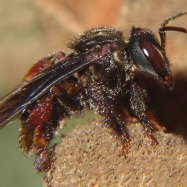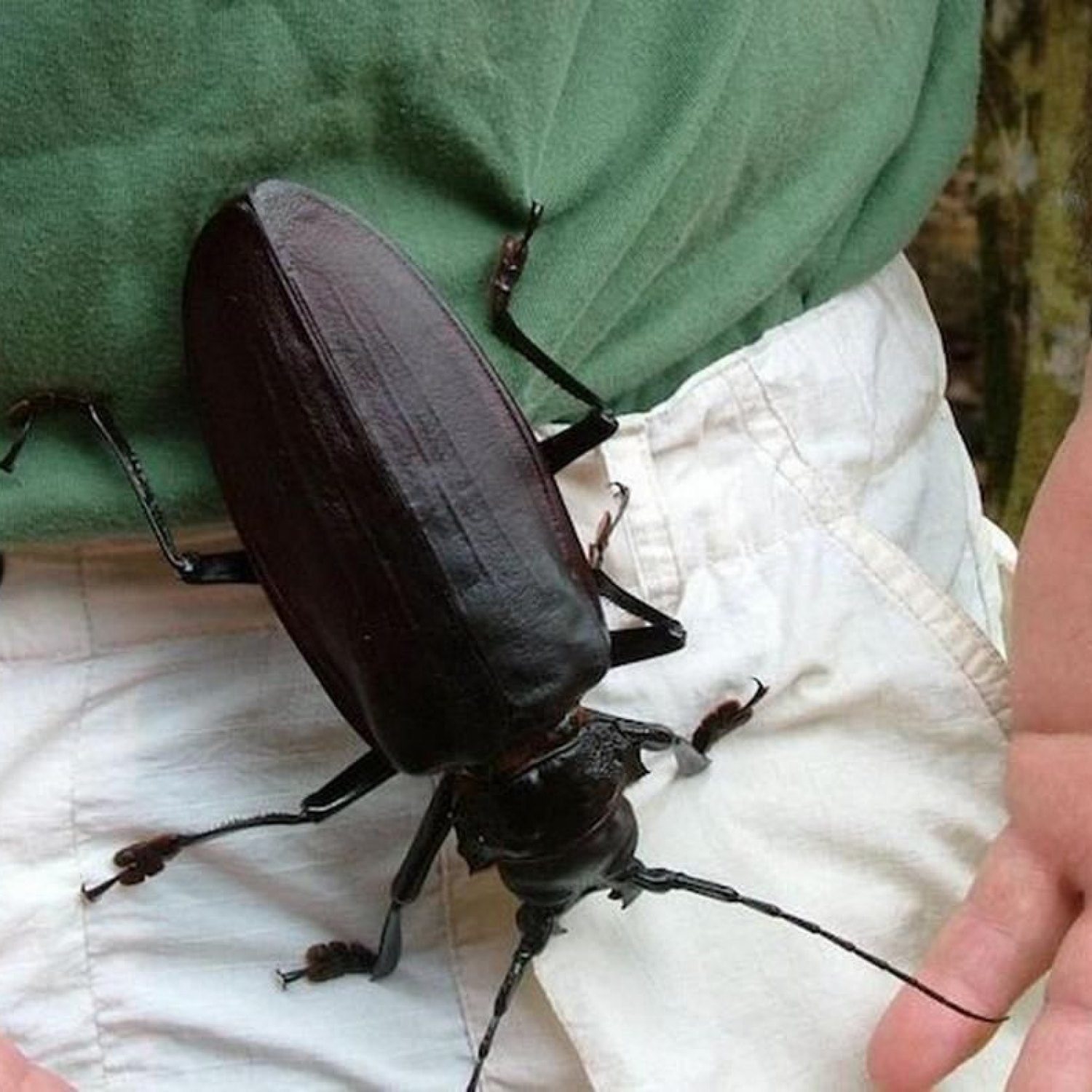
Titan Beetle
6.5 to 16.7 cm
The Titan Beetle, found in the Amazon rainforest, is one of the largest beetles in the world. With a length of 6.5 to 16.7 cm, and a distinctive elongated and cylindrical body shape, this beetle is a sight to behold. Belonging to the family Cerambycidae, it is known for its powerful mandibles, used for crushing hard wood. Despite its imposing size, it is completely harmless to humans. #TitanBeetle #AmazonRainforest #Cerambycidae.
Animal Details Summary:
Common Name: Titan Beetle
Kingdom: Animalia
Habitat: Tropical rainforests
Welcome to the Fascinating World of the Titan Beetle
Deep in the heart of the Amazon rainforest resides one of the most intriguing and enigmatic creatures – the Titan Beetle (Titanus giganteus). This insect, also known as the Titanus beetle, is a marvel of the animal kingdom, with its massive size and striking appearance. Upon first glance, one would not believe that this formidable beetle is actually a member of the insect class, but rather a mini dinosaur. Let's embark on a journey to discover more about this fascinating creature Titan Beetle.The Basics of a Titan Beetle
Scientifically classified as Titanus giganteus, the Titan beetle is a member of the kingdom Animalia, the phylum Arthropoda, and the class Insecta. It belongs to the order Coleoptera, which consists of beetles, and the family Cerambycidae, which includes longhorn beetles.The Titan beetle can be found exclusively in the tropical rainforests of South America, particularly in Brazil. These beetles are most prevalent in the Amazon rainforest, where they thrive in the humid and dense environment. They are primarily active during the wet season, which runs from November to April.
Although the Titan beetle is giant in size, with the average length ranging from 6.5 to 16.7 cm, they are actually quite elusive and difficult to spot. This is due to their behavior of staying hidden during the day and being active at night, making them a rare sight for humans Texas Indigo Snake.
A Closer Look at the Titan Beetle's Habitat
The Titan beetle can be found amidst leaf litter, decaying logs, and tree stumps in the tropical rainforest. They are also known to reside in hollowed-out trees and dense vegetation. This environment provides the perfect setting for these beetles to thrive, as it offers an abundant food source and protection from predators.Their wood-boring feeding method also plays a crucial role in their habitat selection. As larvae, Titan beetles feed on decaying wood, making the tropical rainforest their ideal home due to the abundance of fallen trees and dead wood.
The Unique Features of a Titan Beetle
One of the most striking features of the Titan beetle is its size. In comparison to other beetles, the Titan beetle is enormous, with a body length that can exceed 16 cm. This makes it one of the largest beetle species in the world. Its elongated and cylindrical body shape also sets it apart from other beetles, earning it the nickname "Goliath beetle."Aside from its massive size, the Titan beetle also boasts a beautiful brown coloration. The shades of brown on its exoskeleton vary, ranging from dark reddish-brown to light tan. This coloration serves as camouflage, allowing the beetle to blend in seamlessly with its surroundings.
A Titan Beetle's Diet and Feeding Habits
The Titan beetle's diet consists primarily of decaying wood. As larvae, they are equipped with strong mandibles that can easily chew through wood to obtain their food. As adults, they do not feed and rely on energy reserves from their larval stage.Their wood-boring feeding method is essential not only for their survival but also for the ecosystem. By breaking down decaying wood, Titan beetles contribute to nutrient cycling in the rainforest, aiding in the recycling of organic matter.
The Titan Beetle's Role in the Ecosystem
The Titan beetle's presence in the rainforest plays a vital role in maintaining the ecosystem's balance. As larva, they help in the decomposition process of dead wood, returning nutrients to the soil and creating space for new plant growth. As adults, they also serve as a source of food for other creatures such as birds, reptiles, and mammals.Additionally, the Titan beetle is an indicator species, meaning their presence is a sign of a healthy and thriving ecosystem. Their rarity and specific habitat requirements make them vulnerable to changes in the environment, making their conservation crucial for the rainforest's well-being.
The Titan Beetle's Defense Mechanism
Despite their large size, Titan beetles have many predators, such as birds, reptiles, and other insects. To defend themselves, these beetles have a unique defense mechanism. When threatened, they emit a hissing sound that mimics a snake, often frightening predators away. This sound is produced by rubbing specialized body segments together.In addition to their hissing, Titan beetles also possess powerful mandibles. Although they do not bite humans, they can inflict a painful bite when handled. This makes it essential to admire these creatures from a distance and avoid handling them.
Exploring the Fascinating World of NLP and Titan Beetles
Natural Language Processing (NLP) is a subfield of artificial intelligence that allows computers to analyze, understand, and generate human language. As the use of NLP continues to grow, so does the potential for it to revolutionize the study of animals.One exciting application of NLP in the study of animals is the analysis of their communication methods. As mentioned earlier, Titan beetles produce a hissing sound to ward off predators. With NLP, researchers can analyze this sound and gain a deeper understanding of how these beetles communicate with each other and its effectiveness in deterring predators.
Moreover, the use of NLP can also help in the conservation efforts of the Titan beetle. By analyzing data from various sources such as scientific surveys, field reports, and social media posts, NLP can provide valuable insights into the beetles' population and distribution. This information can aid conservationists in creating targeted strategies to protect this magnificent creature.
Conclusion: A Marvel of the Animal Kingdom
In conclusion, the Titan beetle is truly a marvel of the animal kingdom. From its enormous size and striking appearance to its crucial role in the ecosystem, this beetle continues to captivate and intrigue people all over the world. As we continue to learn more about this fascinating creature, let us also strive to protect it and the environment it calls home. After all, the Titan beetle is not just a giant beetle; it is a testament to the diversity and wonder of nature.

Titan Beetle
Animal Details Titan Beetle - Scientific Name: Titanus giganteus
- Category: Animals T
- Scientific Name: Titanus giganteus
- Common Name: Titan Beetle
- Kingdom: Animalia
- Phylum: Arthropoda
- Class: Insecta
- Order: Coleoptera
- Family: Cerambycidae
- Habitat: Tropical rainforests
- Feeding Method: Wood-boring
- Geographical Distribution: South America
- Country of Origin: Brazil
- Location: Amazon rainforest
- Animal Coloration: Brown
- Body Shape: Elongated and cylindrical
- Length: 6.5 to 16.7 cm
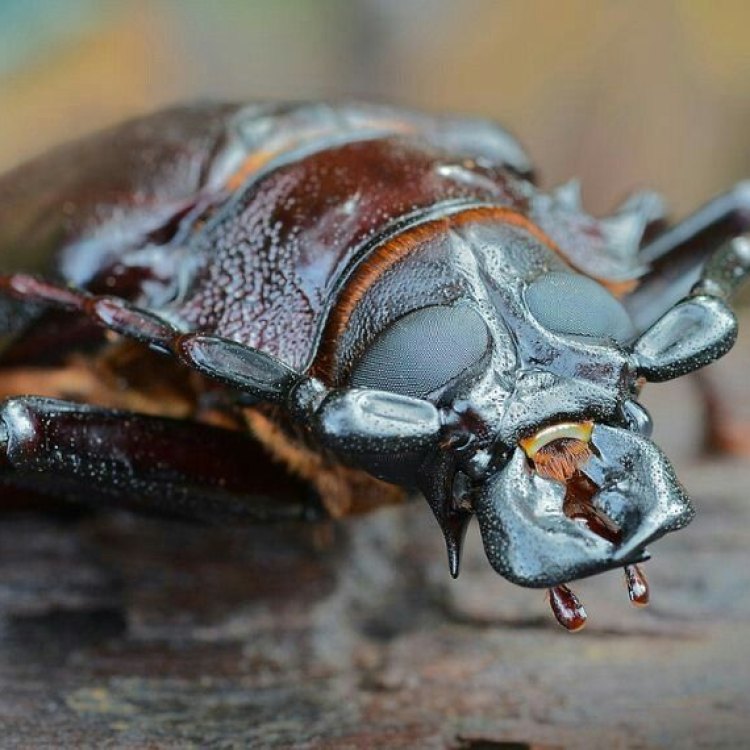
Titan Beetle
- Adult Size: Large
- Average Lifespan: 1 to 2 years
- Reproduction: Sexual
- Reproductive Behavior: Mating occurs on tree trunks
- Sound or Call: None
- Migration Pattern: Non-migratory
- Social Groups: Solitary
- Behavior: Nocturnal
- Threats: Habitat loss and illegal trade
- Conservation Status: Not evaluated
- Impact on Ecosystem: Important decomposers
- Human Use: Collected as specimens and sometimes used in jewelry
- Distinctive Features: Long, strong mandibles
- Interesting Facts: One of the largest beetles in the world
- Predator: No specific predator
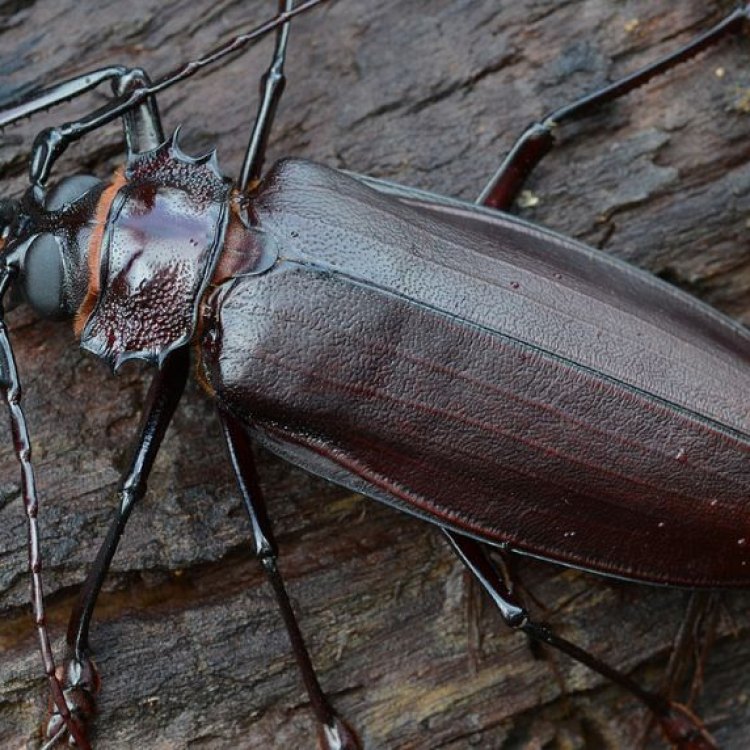
Titanus giganteus
Titan Beetle: The Mighty Giant of the Insect World
The insect world is filled with fascinating creatures, each with its own unique features and behaviors. However, few can match the impressive appearance and abilities of the Titan Beetle (Titanus giganteus). This mighty giant, found in the rainforests of South America, has captivated the interest of entomologists and nature enthusiasts alike due to its large size, long lifespan, and distinctive features. Let us delve deeper into the world of the Titan Beetle and uncover the secrets behind its astonishing reputation PeaceOfAnimals.Com.Size and Lifespan
The Titan Beetle is a formidable insect, known for its large size and intimidating appearance. Growing up to an astonishing length of 6.5 inches, it is considered one of the largest beetles in the world. To put this into perspective, the average paper clip is only around 1 inch long, making the Titan Beetle almost 7 times larger! Its size and impressive strength have earned it the nickname "Hercules Beetle."In addition to its impressive size, the Titan Beetle also boasts a surprisingly long lifespan for an insect. While most insects have short lifespans ranging from a few days to a few weeks, the Titan Beetle can live up to 1 to 2 years in its adult stage. This longevity is due to its slow growth rate and its ability to hibernate during unfavorable conditions. The Titan Beetle spends most of its life as a larva, which can take up to 2 years to reach its full size before pupating into an adult.
Reproductive Behavior
Like most insects, the Titan Beetle reproduces sexually, with males and females coming together to mate Tenterfield Terrier. However, what makes their reproductive behavior unique is the location and method by which they mate. Mating is known to occur on tree trunks, where males will use their long and strong mandibles (more on these later) to fight each other for the chance to mate with a female. Once a male has successfully courted a female, they will engage in a mating behavior called "tumbling," where the male and female will roll themselves off the tree and onto the ground, with the male still holding onto the female. This behavior is quite a spectacle to witness and helps ensure the survival of the species by reducing the risk of predation from other insects.Solitary and Nocturnal
The Titan Beetle is a solitary creature, preferring to live and hunt alone. They are also mostly nocturnal, meaning they are active at night and sleep during the day. This behavior is an adaptation to their environment, as the darkness of the rainforest floor provides them with the ideal cover to hunt and scavenge for food. It is also during the night that they are most active in search of a mate.Threats and Conservation Status
Unfortunately, like many other species in the world, the Titan Beetle is facing threats to its survival. Habitat loss, due to deforestation, is the most significant threat to these magnificent creatures. The destruction of their rainforest home leads to a loss of food sources and disrupts their natural habitat, making it difficult for them to survive. Another threat is the illegal trade of these beetles as exotic pets or for use in jewelry. This practice is not only cruel but also contributes to the decline of their population in the wild.Despite these threats, the conservation status of the Titan Beetle is currently listed as "Not evaluated" by the International Union for Conservation of Nature (IUCN). This lack of evaluation highlights the need for more research and conservation efforts to protect these fascinating creatures.
Importance in the Ecosystem
While the Titan Beetle may seem intimidating and fearsome, it has an essential role in maintaining the balance of the rainforest ecosystem. As adults, they mainly feed on the sap of trees, which helps keep the trees healthy. However, as larvae, they play an even more crucial role as decomposers. They feed on rotting wood, breaking it down into smaller pieces, and releasing essential nutrients into the soil. Without these beetles, the rainforest would not have the necessary nutrients to support its diverse ecosystem.Human Use
The Titan Beetle is also sought after by humans, but not for its medicinal or nutritional values like many other insects. Instead, this magnificent creature is collected as a specimen by insect enthusiasts and scientists. Due to its impressive size and distinctive features, it is often displayed in insect collections and museums. On rare occasions, the Titan Beetle's long and strong mandibles have been used in jewelry, adding a unique and exotic touch to these pieces.Distinctive Features and Interesting Facts
The Titan Beetle has many unique features that make it stand out from other insects in the world. As mentioned earlier, its long and strong mandibles are one of its most distinctive features, measuring up to a third of its body length. These mandibles also have a sharp edge that can be used to defend itself against predators or fight for a mate. Interestingly, these mandibles are only present in males, while females have much smaller and weaker mandibles.Apart from its mandibles, the Titan Beetle has other interesting features that make it one of the world's most intriguing insects. For example, it does not have any sound or call, unlike many other insects, making it completely silent. Another fascinating fact about the Titan Beetle is that it does not have a specific predator. Its size and strength make it difficult for most predators to take it down, making it one of nature's most formidable creatures.
In Conclusion
The Titan Beetle is without a doubt an impressive creature, from its remarkable size and lifespan to its distinctive features and behavior. However, as with most living beings, this mighty giant is facing threats that could lead to its extinction. It is crucial for us to recognize the importance of this species and take steps to protect and conserve their natural habitat. As we continue to explore and discover the wonders of the natural world, let us also remember the responsibility we have to preserve it for future generations to appreciate and learn from.

Welcome to the Fascinating World of the Titan Beetle
Disclaimer: The content provided is for informational purposes only. We cannot guarantee the accuracy of the information on this page 100%. All information provided here may change without prior notice.


